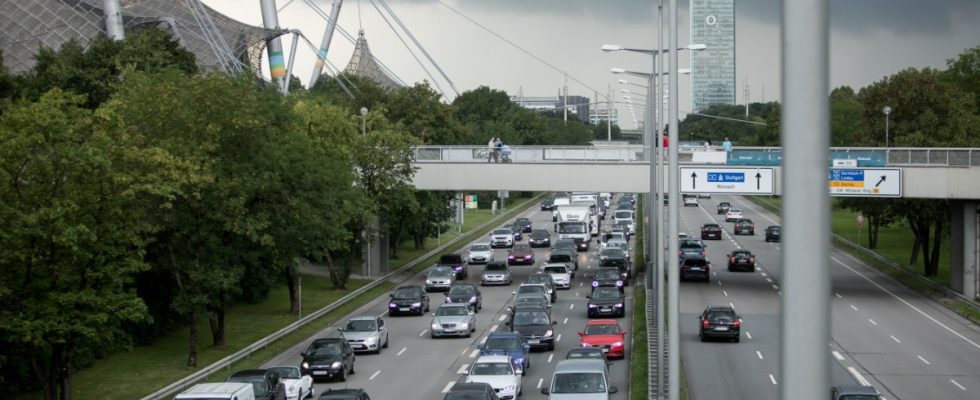The air on the Mittlerer Ring has become cleaner. Whether this is actually due to the first stage of the diesel driving ban or perhaps the weather in the first few months of this year is – as the current debate in the city council factions shows – debatable. Because the EU limit for pollution by nitrogen dioxide (NO₂) on Landshuter Allee was still exceeded by ten percent. Instead of the permitted 40 micrograms of NO₂ per cubic meter of air, the previous average was 44 micrograms. On the Tegernseer Landstraße, the limit was exceeded by two micrograms, i.e. by five percent.
However, the factions of the CSU/Free Voters, FDP/Bavarian Party, SPD/Volt and Greens/Rosa Liste are in complete agreement that it could be worth trying to finally reduce exhaust emissions with another measure and without a ban at all to manage. With a joint application, they want to improve the flow of traffic and thereby reduce exhaust emissions. And this is to be achieved through a simple and inexpensive measure: the so-called lane line guidance is to be changed with new road markings at eight critical points of the ring. This means that solid lines should be used to encourage drivers to merge into the right place without causing traffic jams. Because in stop-and-go traffic, the cars blow more toxic exhaust gases into the air than when driving smoothly.
The building department and the mobility department should optimize the threading in and out of the following sections of the Mittlerer Ring: between the McGraw Graben and the Candid Bridge, between the Candid Bridge and the Brudermühl Tunnel, between the Brudermühl, Heckenstaller and Luise-Kiesselbach Tunnels , between the Donnersbergerbrücke and the Olympic site, at the junction with the A9 in both directions, at the Ring access road from Ungererstraße at Schenkendorfstraße, at the Ring access road via Dietlindenstraße in an easterly direction from Ungererstraße and at the access road to the A8 from the Innsbrucker Ring from the east.
“By accelerating the flow of traffic, we are actively working to improve air quality and thus also to avoid further driving bans,” says FW City Councilor Hans-Peter Mehling. “Every measure counts in order to save citizens further bans and thus costs.” SPD parliamentary group leader Christian Müller explains that the top priority is to make local public transport more attractive. “But at the same time we have to keep an eye on the traffic on the streets because there are people who depend on their cars.”
Greens traffic expert Paul Bickelbacher promotes integrated urban development for short distances and a switch to pedestrian, bicycle and public transport. “However, there will still be a significant amount of car traffic, for example commercial traffic. This should be bundled and handled as compatible as possible.” Fritz Roth (FDP) is also convinced that the eight measures will allow traffic to flow better. With the proposals of the intergroup application, this can be implemented quickly and cost-effectively, “that’s how pragmatic traffic policy works that achieves significant improvements”.
If the limit value is still exceeded, the second stage of the diesel driving ban should not be triggered, as long as the limit is only slightly exceeded as before. The green-red town hall coalition now agrees on this.

